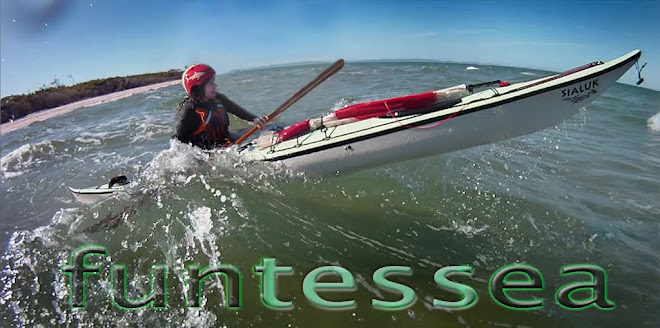Like most kayakers, when I first started sea kayaking, learning to kayak roll was on my priority list.
I couldn’t wait to learn to roll believing it would be easily accomplished.
Rolling would be a key skill to letting me go where I wanted to travel in a sea kayak…out in the sea.
Armed with basic bracing strokes, I eagerly attended roll training with a qualified instructor. As I wasn't used to the reality of being upside down underwater, once in the rolling class, I soon realized that suddenly being tipped over underwater was not the most comfortable or familiar environment.
Anxiety mixed with the confusion of being upside down made learning the steps to a successful roll extremely difficult. I finished the training disappointed with my lack of progress, unsure if I would ever be able to master this seemingly complicated skill.
Looking back it is now obvious to me that if you are not comfortable upside down in the water, you are wasting your time and money attending a kayak roll class. 'Pre' rolling or priming is essential. It was only after a lot of getting wet and mucking around in my kayak that I was finally more confident underwater and ready for rolling.
getting comfortable underwater
I’m sure there are instructors around who will take your money regardless of your readiness to roll however GOOD instructors take the time to find out if you are confident underwater, if your kayak fits you and if you use bracing and skulling strokes.
With persistence I could roll but my technique was basic (I would roll back up with force rather then finesse) and unreliable. Introduced to the intricacies of balanced bracing by Greg Schwarz, I was ecstatic when I finally learn the "balanced brace".
balanced bracing
Learning to scull and balance brace gave me confidence underwater and an understanding of how the kayak moved in the water with certain body movements.
I discovered rolling is not about strength and pushing a big bladed paddle into the water to bring me back up. Rolling is more about aligning my body with my kayak, using my body to apply opposing forces with my leg/knee that will turn the kayak into an upright position. Not all kayakers are equal: some are more flexible than others and some have better underwater orientation, so training should be adjusted to the individual.
Hanging out with Greg Schwarz I learned another "soft roll"; the "butterfly" roll.
Greg likes to 'finesse' his rolls and he loves to teach that to others.
I am not a qualified instructor but I recommend aspiring rollers to undertake a lot of "priming" before you take that class.
Become confident with wet exits, happy to hang upside down for a minute (or two) before popping the skirt and maybe, with the help of a knowlegeable friend, start some basic sweep strokes with a paddle float to learn the motion of a roll. The chances are that unlike my first class, a prepared student will have more luck in successfully completing a roll course than one that has never tipped upside down in his/her kayak.

Great post! This summer is going to be my "Summer of Learning to Roll", so appreciate this little journey piece! Happy paddles - FP
ReplyDeleteFatPaddler
ReplyDeleteIt's Autumn...How was your Summer of learning to roll ?
Tess